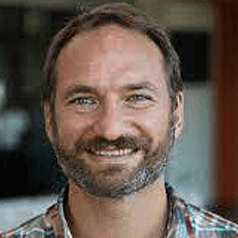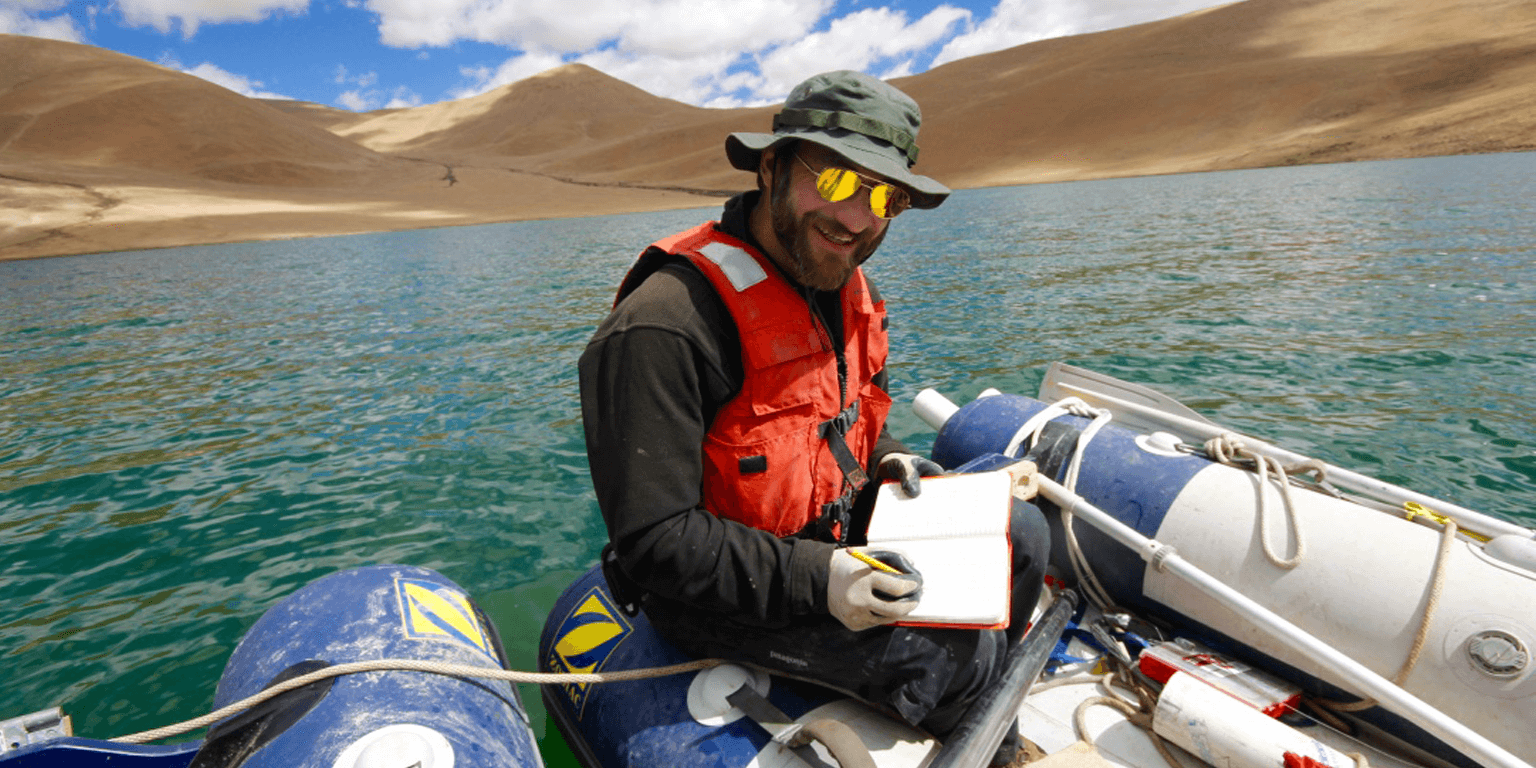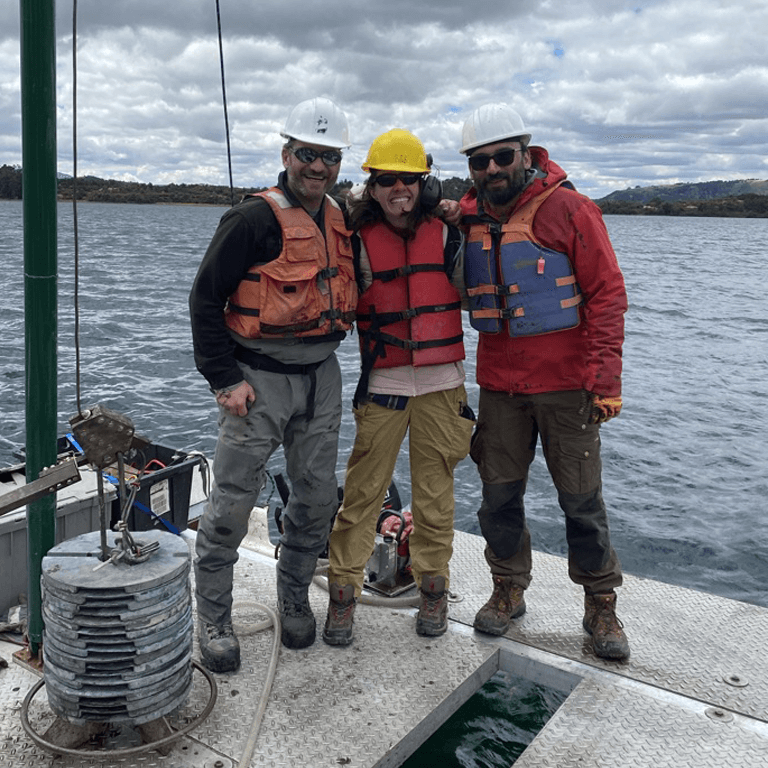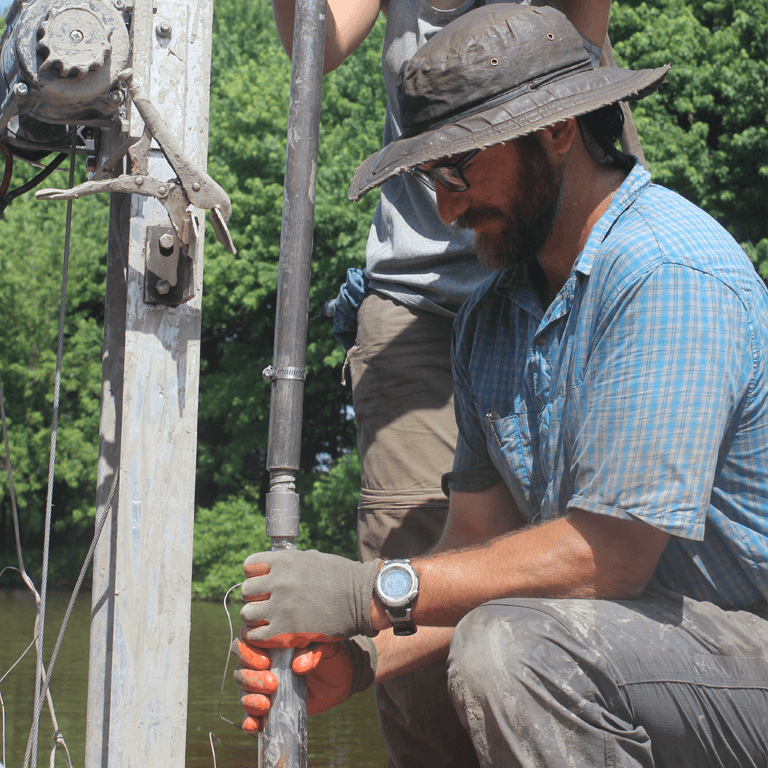Meet Broxton Bird

Broxton Bird, Ph.D. is an Associate Professor in the Department of Earth Sciences at IUPUI. Professor Bird is a paleo climatologist, which means that he is a geologist that reconstructs Earth's climate through time. Climate change poses perhaps the greatest existential threat to human society and environments across the planet today. In order to tackle the threats posed by climate change, it's necessary to understand how the climate system functions naturally, and if and how humans have altered these natural climate functions, as well as their impact on the landscape.
In the Midwest, his research is focused on human landscape-climate interactions. The instrumental record of climate change and landscape interactions only extends for perhaps the last hundred years. And as such, his work relies on natural archives that provide information about past climates, including flooding. To reconstruct climate, he mainly uses what are called kettle lakes, which are simply lakes that were formed at the end of our last ice age as the continental ice sheets retreated. These left behind blocks of ice on the landscape that eventually melted to leave behind depressions that became lakes. To reconstruct flooding, Professor Bird uses lakes that are currently located in floodplains of major rivers, such as the White River, Ohio River, and other major rivers in the midcontinent. These rivers are infilled with sediments during floods and by dating the sediments, he and his research team can determine how quickly sediments infilled these lakes at different times, with more quick sedimentation being more frequent flooding. And when these lakes are infilling with sediment more slowly, then there is less flooding over time. By combining these two types of lake sediment records together, Professor Bird and his research team can understand the relationships between climate and flooding.
They can also combine the archeological record with these types of data in order to understand pre-Columbian or pre-colonial climate flood-human relationships, and then also compare those with the climate relationships that are happening today. These records begin at the present day and extend far back into time before major colonial landscape modifications. Thus, they can see how natural climate-flood relationships existed prior to landscape modifications and how people may have influenced climate-flood relationships with our modern land use practices. They can also determine the rates at which rivers migrate across the watershed and across the landscape so that we can understand the relationship between climate and stream mobility, which has major implications for erosion, especially threats to our infrastructure, communities and agricultural lands. So with this information, Professor Bird and his research team can predict how flooding and river mobility will respond to projected climate changes and help communities prepare for the future.
In his free time, Professor Bird enjoys spending time with his family and pets, hiking, and skiing.

As we learn more and refine our understanding of the integrated climate-landscape system, we are able to help society deal with current and future climate-related issues.
Professor Broxton Bird



Photos of Professor Bird out in the field conducting research.
Q and A with Professor Broxton Bird
As an undergraduate, I worked on a project that used sediment cores from the Andvord Bay on the Antarctic Peninsula to reconstruct when ice shelves were present or absent. I found it fascinating that you could literally see changes in the sediments that indicated either open water conditions or a bay that was covered in ice. It was also amazing to think of sediment cores as time machines. Their top begins at the present day and then as you go deeper, you go back in time and see what conditions at specific locations were in the past and how they changed. Linking data from different sites, in some cases from across the planet, to understand how Earth’s climate functioned as a system and responded to different perturbations also captivated me and made me want to learn more about how the Earth worked and what this meant for our future.
Climate change and its impacts pose existential threats not just to human society, but life systems as we know them on this planet. The heart of my work is to understand how our climate systems function and respond to different forcings, both natural and anthropogenic. By understanding how the climate system functioned before major anthropogenic influences began during the industrial revolution, and how they have functioned since then, we can better understand how the system is likely to respond to continued anthropogenic influences.
One problem that my research is addressing here in the Midwest, is the relationships between climate, land use, and fluvial (river) systems. My work has reconstructed climate conditions during what we call the Common Era (the last 2,000 years), including changes in the seasonality of precipitation, where moisture is derived from, and regional warm season temperatures. I have also reconstructed flooding on large and small streams in the Midwest, which has allowed us to better understand “natural” climate-flood relationships and how they have been modified by anthropogenic activities.
By determining the natural and anthropogenic drivers of Midwestern climate and flooding, we are aiding predictions of how projected climate changes are likely to impact these systems. In addition to changes in flood frequencies, I have also been investigating the mobility of streams across their floodplain. With this information, we are contributing to efforts to determine which river reaches (river sections) are more likely to flood and experience fluvial erosion hazards as streams respond to increased discharges. This helps communities plan for and recover from flood events.
I enjoy all aspects of my work from sample collection in the field, to processing cores and samples in the lab, to disseminating my results. But I suppose it is the discovery of new and unexpected findings that keeps me going. And as we learn more and refine our understanding of the integrated climate-landscape system, we are able to help society deal with current and future climate-related issues.
Students are an integral part of my research program. To reconstruct climate and fluvial processes (i.e., flooding), I collect sediment cores from lakes that are located across the Midwest in a variety of environmental settings. Graduate and undergraduate students are involved in all aspects of this work. Through IUPUI’s Multidisciplinary Undergraduate Research Initiative (MURI) program, I have engaged over 60 undergraduates in my Midwestern research program. I have also mentored several MSc and Ph.D. students. These students have helped to collect lake sediment cores in the field, process the cores and develop proxy climate and flood records in the lab, and disseminate the results in talks, posters, and publications.
The community is engaged in my work through collaborations with community organizations and governments such as The Nature Conservancy, the U.S. Geological Survey, and the Indiana Department of Natural Resources. Through these institutions, we address issues surrounding fluvial hazards, including mitigation and zoning. We are also working to develop a post-flood recovery plan that will help communities respond to floods and recover from their aftermath.
Despite our work, there is still a need to get additional data. So, I am continuing to collect sediment cores to develop new paleoclimate records and flood frequency records from Indiana and across the Midwest. We are also working on a post-flood recovery plan to help communities impacted by floods rebuild in a way that accounts for changes in fluvial systems as a result of anthropogenic activities.
Conversation with Professor Broxton Bird
On Friday, April 28, 2023 from 12 noon to 1:00 p.m., Professor Broxton Bird talked about "Paleo Perspectives of Climate-Flood Relationships in the Midcontinental U.S.: Using the past to Inform the Future." During this conversation, Dr. Broxton Bird gave an overview of his paleoclimate research in the midcontinental US that seeks to determine the relationship between past climate change and flooding and how this information can be used to understand how human impacts on the climate and landscape have altered these natural systems and what it means for the future.
Interested in Becoming an IUPUI TRIP Scholar?
Eligibility
IUPUI faculty member conducting translational community-based research
Benefits
- Valued member of an extensive network of researchers/collaborators
- Opportunities to showcase work
Subscribe to the TRIP Scholars of the Month

